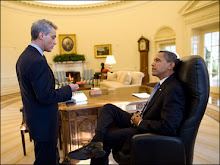So there is obviously a lil thematic business going on here for Easter/The Time of Rising. Of course there is Jesus and the bunnies, but we also have a cute new Dr. Who pending arrival, a wonderful posse of zombies poking up through the dirt like the crocus of early spring and thanks to my mister- a bracing dose of Wagner's Parsifal (see his piece below). Take a taste of the multi-layered and subterranean psychological sound and then dip into a few words on W from notable operaphiles:
http://www.youtube.com/watch?v=mPn3JV3GHRE&feature=related
http://www.monsalvat.no/story5.htm
And from Peter Conrad's Preface and chapter on Wagner in his A Song of Love and Death: The Meaning of Opera...
"... to blasphemy against a Christian religion that reproves this bodily glory and chastens the organism in which the voice is warmly housed!"
"Drama and music have together, like Tristan and Isolde, passed through a rite of death and rebirth. The outcome is Parsifal: an opera midway between Mass and orgy, asking again the question which has perplexed the form since it's beginnings- is this a consecration of a threater, or the desecration of a church? Music here is both salvation and venereal perdition. Parsifal is set in a temple, and also in a magician's den; hortatory voices sound in the heights, but in the depths there are howling miseries and feral laughter. Titurel calls down grace from above, Klingsor hauls up fiends from below. The realms intersect in Amfortas, the sinner who must, despite his self-scourging, perform the priestly office. This is Wagner himself, whose operas redeem by corrupting.
This is a religious mystery, but it is also- as Wagner uses it- a specifically theatrical mystery, and it claims immortality for his own art. Parsifal attempts a solemn contemplative stasis. Arthur Symons at Bayreuth in 1897 marvled to see "for the first time, people really motionless on the stage." Time too has been stopped, by those reflective pauses in the first prelude. After Gurnemanz's initial narration, the same story is recited over and over. Wagner is imitating and and equaling the incarnation: the moment when eternity descended into time and, with the advent of Christ, history at once ended and began again. Drama occupies space, music happens in time. Rituals, like those staged in Parsifal and like Parsifal itself, arrest time by spatializing it. Repitition ensures that an instant lasts forever, and that we can travel around the world without needing to stir from home. This mystery, in the transformations from the forest to the temple in the first and third acts, is devoutly rehearsed by Wagner's scenery, and choreographed by his music. The set moves, while Parsifal and Gurnemanz walk on the spot. Parsifal asks what is happening; Gurnemanz explains that space is becoming time. If they wait, the temple will come to them. The theater has miracles of its own.
The Easter of Parsifal belongs in all mythologies at once. It is a pagan rite of spring and a Christian promise of resurrection; it also hints at the almost supernatural power of the theater, where every performance is a reenactment, restoring life to the dead letter of the score and the text. The holy day, as Gurnemanz calls it, is a theatrical holiday. It marks the festival decreed by Wagner on the stage which Parsifal consecrated, and it seeks to ensure that the feast is immovable: Wagner ordered that this opera should never be given outside Bayreuth. Art has not succumbed to religion, as Nietzsche claimed when expressing his dismay about Parsifal; the art of opera has itself been established as a religion.
coming from Jonathan Stacy's The Myth of Male Parthenogenesis...
Subscribe to:
Post Comments (Atom)


































.jpg)
.jpg)


























.jpg)




















































































































































(2).jpg)
















































































































.jpeg)










































No comments:
Post a Comment